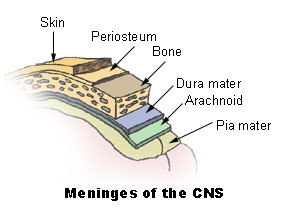Not only is meningitis potentially lethal, but it is also difficult to diagnose. Many people die each year before their doctor insists they have something else; when meningitis goes untreated, it won’t simply disappear on its own. This is why it is so important to keep a watchful eye on your children. Your doctor won’t see all of the symptoms in one fifteen-minute office visit, but if you’ve been paying attention, you can detect the symptoms of meningitis in your child and ensure speedy treatment. Knowledge of meningitis and its symptoms is your best line of defense.
Fever
If your child is experiencing a high fever, particularly if the temperature is over one hundred degrees, you should be concerned. Take your child’s temperature every couple of hours to monitor its progress, and if the fever is accompanined by other symptoms of meningitis, take your child to the emergency room immediately. Keep a written record of the progression of your child’s fever for your doctor to review.
Headache
It is especially common for patients with meningitis to be diagnosed with migraines because the symptoms are so familiar. A headache combined with neck tension or soreness is particularly indicative of meningitis. If your child complains of a severe headache that worsens when the head is moved suddenly from side-to-side, you might want to head to the nearest doctor or emergency room, particularly if it is combined with other symptoms of meningitis.
Muscle Tension
Most children don’t suffer from severe muscle tension unless it is a secondary effect from another disease, such as meningitis. If your child is complaining of muscle tension in the neck, shoulders or back, it could be meningitis. Your child might also suffer from muscle weakness in one side of the body or the other, similar to the result of a stroke in an older person.
Rash
Although a rash doesn’t have to be present as a symptom of meningitis, it is common in about sixty percent of cases. The rash might look like hives: Small reddish dots concentrated in one particular area; or it might resemble a large bruise in shape and color. If a rash starts appearing, look closely for other symptoms of meningitis. If Benadryl doesn’t help the rash to go away, see a doctor immediately.
Photophobia
This is another symptom of a migraine that is often misdiagnosed in place of meningitis. Photophobia is an increased sensitivity to light. If your child has trouble looking at direct light or if light intensifies the pain of a headache, you might be dealing with meningitis.
Vomiting
Obviously, this is a fairly common symptom of many problems, so it isn’t indicative of meningitis by itself. However, if vomiting is coupled with out symptoms of meningitis, you should see a doctor immediately. This is especially true if it follows the onset of an intense headache or muscle stiffness.
Fontanelle
The fontanelle is the soft spot on a baby’s head. If you notice that it is swollen or bulging, or if you child cries out in pain when you touch it, you should immediately seek medical treatment. This is a definite symptom of meningitis and is particularly dangerous.
Unfortunately, some forms of meningitis — particularly viral meningitis — appear without symptoms for several hours. If you have any doubt about signs and symptoms, take your child to the emergency room immediately. It is much better to be safe than sorry, and you might want to mention meningitis as a possible problem.
Reference:
- www.musa.org – Meningitis Foundation of America

